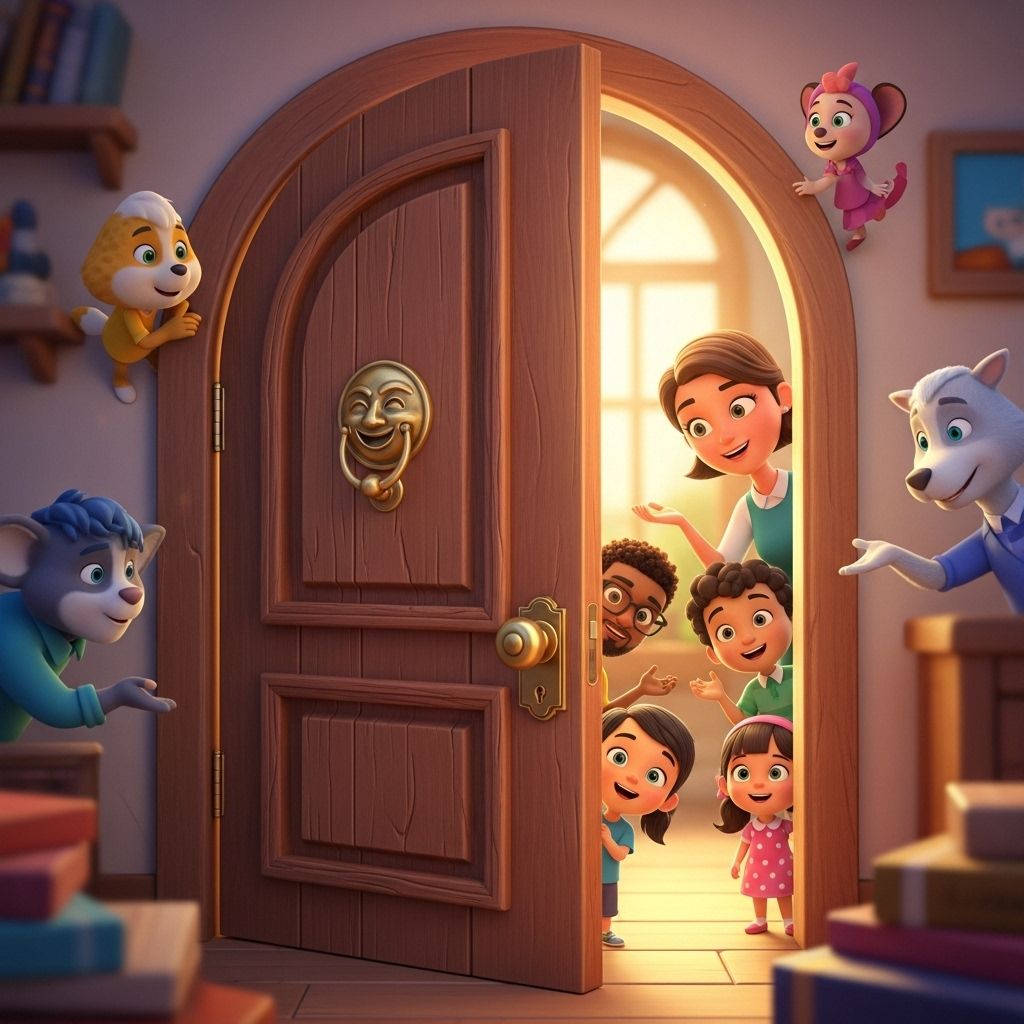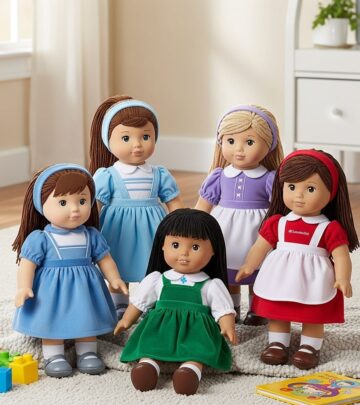Best Knock-Knock Jokes for Kids & Family Fun
Clever wordplay designed to spark smiles and strengthen shared moments.

The Ultimate Collection of Knock-Knock Jokes That Will Leave Your Family Howling
There’s something magical about the classic knock-knock joke format that has captivated children and adults for generations. These timeless gems of humor follow a simple yet effective structure that builds anticipation and delivers satisfying punchlines. Whether you’re looking to entertain your kids during a car ride, break the ice at a family gathering, or simply share some wholesome laughs, knock-knock jokes remain one of the most beloved forms of family-friendly entertainment.
The beauty of knock-knock jokes lies in their interactive nature and predictable format, making them perfect for children who are just learning to appreciate humor. The call-and-response pattern helps kids feel involved in the joke-telling process, while the wordplay and puns introduce them to the nuances of language in an entertaining way.
Classic Knock-Knock Jokes for All Ages
The foundation of any good knock-knock joke collection starts with the classics that have stood the test of time. These jokes work because they rely on clever wordplay, unexpected twists, and familiar phrases that everyone can appreciate.
Knock, knock.
Who’s there?
Honeydew.
Honeydew who?
Honeydew you know how much I miss you?
This sweet sentiment wrapped in a playful pun demonstrates how knock-knock jokes can convey affection while generating laughs. The unexpected connection between “honeydew” and “honey, do” creates that delightful moment of recognition that makes these jokes so satisfying.
Knock, knock.
Who’s there?
Harry.
Harry who?
Harry up and open the door!
The urgency implied in this joke, combined with the name play on “Harry” and “hurry,” creates an amusing scenario that kids particularly enjoy. It’s the kind of joke that works on multiple levels and can be appreciated by different age groups.
Food-Themed Knock-Knock Jokes
Food provides endless inspiration for knock-knock jokes, combining familiar items with unexpected wordplay. These jokes are particularly effective because everyone can relate to food, making the punchlines more accessible and memorable.
Knock, knock.
Who’s there?
Wafer.
Wafer who?
Been a wafer a while, but now I’m back.
The clever substitution of “wafer” for “away for” creates a delightful surprise that exemplifies the best of knock-knock humor. These food puns work because they transform everyday items into vehicles for wordplay.
Knock, knock.
Who’s there?
Cornflakes.
Cornflakes who?
I’ll tell you next week, it’s a cereal.
This joke brilliantly plays on the homophone “cereal” and “serial,” creating a meta-joke that references ongoing storytelling while maintaining the food theme. It’s sophisticated enough to amuse adults while remaining accessible to children.
Musical and Sound-Based Jokes
Music and sound effects provide another rich category for knock-knock jokes, often incorporating familiar instruments, songs, or sound-related wordplay that creates memorable punchlines.
Knock, knock.
Who’s there?
Tuba.
Tuba who?
Tuba toothpaste. Now brush your teeth.
This joke transforms a brass instrument into a parental reminder, combining the unexpected with the practical. The shift from musical instrument to dental hygiene creates an amusing juxtaposition that catches listeners off guard.
Knock, knock.
Who’s there?
A wood wok.
A wood wok who?
A wood wok 500 miles, and a wood wok 500 more.
Referencing the popular song “500 Miles,” this joke cleverly substitutes “would walk” with “wood wok,” creating a nonsensical but amusing twist on familiar lyrics. It’s the kind of joke that might have listeners humming the tune while chuckling at the wordplay.
Clever Wordplay and Pun-Based Jokes
The most sophisticated knock-knock jokes often rely on clever wordplay that demonstrates the flexibility and humor inherent in the English language. These jokes help children develop an appreciation for linguistic creativity while providing entertainment.
Knock, knock.
Who’s there?
Euripides.
Euripides who?
Euripides clothes, you pay for them.
This joke brilliantly transforms the name of the ancient Greek playwright into “you rip a these,” creating an expensive laundry scenario. It’s educational and entertaining, introducing children to classical references while delivering a practical punchline.
Knock, knock.
Who’s there?
Espresso.
Espresso who?
Espresso yourself, then everyone will know how you feel.
The transformation of “express” into “espresso” creates a coffee-themed advice column, combining beverage culture with emotional intelligence. It’s particularly amusing for adults while remaining comprehensible to children.
Nature and Weather Jokes
Natural elements and weather phenomena provide accessible material for knock-knock jokes, allowing families to connect humor with the world around them.
Knock, knock.
Who’s there?
Pooch.
Pooch who?
Pooch your hat on, it’s cold out.
This joke plays with the similarity between “pooch” (a dog) and “put,” creating a weather-appropriate reminder wrapped in pet-themed wordplay. It’s practical advice delivered through amusing misdirection.
Meta-Humor and Self-Referential Jokes
Some of the most sophisticated knock-knock jokes comment on themselves or the joke-telling process, creating layers of humor that work on multiple levels.
Knock, knock.
Who’s there?
Gwen.
Gwen who?
Gwen will these jokes ever end?
This self-aware joke acknowledges the potentially endless nature of knock-knock joke sessions while maintaining the format. It’s perfect for those moments when you’ve shared multiple jokes and want to acknowledge the audience’s potential fatigue with humor.
Knock, knock.
Who’s there?
Thermos.
Thermos who?
Thermos be a better way to get to you.
Playing on “there must,” this joke suggests persistence in communication while referencing a common household item. It combines determination with everyday objects in a way that’s both touching and amusing.
The Art of Timing and Delivery
The success of knock-knock jokes depends not just on clever wordplay but also on proper timing and delivery. The pause between “Who’s there?” and the reveal builds anticipation, while the rhythm of the exchange creates a natural comedic flow.
When sharing these jokes with children, encourage them to take their time with each line. The anticipation is part of the fun, and rushing through the setup diminishes the impact of the punchline. Teaching kids to savor the buildup helps them understand the mechanics of humor while improving their storytelling skills.
Educational Benefits of Knock-Knock Jokes
Beyond entertainment, knock-knock jokes serve important educational purposes. They introduce children to wordplay, homophones, and the flexibility of language. The format helps develop pattern recognition, memory skills, and social interaction abilities.
The call-and-response nature of these jokes teaches children about conversation dynamics, turn-taking, and the importance of active listening. When kids learn to both tell and respond to knock-knock jokes, they’re practicing essential communication skills in a fun, low-pressure environment.
Creating Family Traditions
Knock-knock jokes can become cherished family traditions, shared during car rides, dinner conversations, or bedtime routines. Their accessibility makes them perfect for all family members to participate, regardless of age or sense of humor.
Consider creating a family joke book where everyone contributes their favorites, or establish “knock-knock joke time” as a regular family activity. These moments of shared laughter become precious memories and help strengthen family bonds through the universal language of humor.
Frequently Asked Questions About Knock-Knock Jokes
Q: What age group enjoys knock-knock jokes the most?
A: While knock-knock jokes appeal to all ages, children between 4-12 years old typically find them most amusing. This age range is perfect for understanding wordplay while still finding the format novel and exciting.
Q: How can I teach my child to tell knock-knock jokes effectively?
A: Start by demonstrating proper timing and encourage them to pause for effect. Help them understand the wordplay in each joke so they can deliver the punchlines with confidence.
Q: Are knock-knock jokes educational?
A: Yes! They teach language skills, wordplay, timing, and social interaction. Children learn about homophones, puns, and the flexibility of language while developing communication skills.
Q: Why do knock-knock jokes follow the same format?
A: The consistent format creates predictability that builds anticipation, making the punchline more satisfying. The structure is easy to remember and allows focus on the creative wordplay.
Q: Can knock-knock jokes help with child development?
A: Absolutely! They promote language development, memory skills, pattern recognition, and social bonding. The interactive nature helps children practice conversation skills and builds confidence.
Knock-knock jokes represent a perfect blend of simplicity and sophistication, offering entertainment that spans generations while providing valuable learning opportunities. Whether you’re looking to brighten someone’s day, break the ice in social situations, or simply share a moment of joy with your family, these timeless jokes deliver reliable results. Remember, the best knock-knock jokes are the ones that bring people together through laughter, creating memories that last long after the final punchline.
References
Read full bio of Sneha Tete












